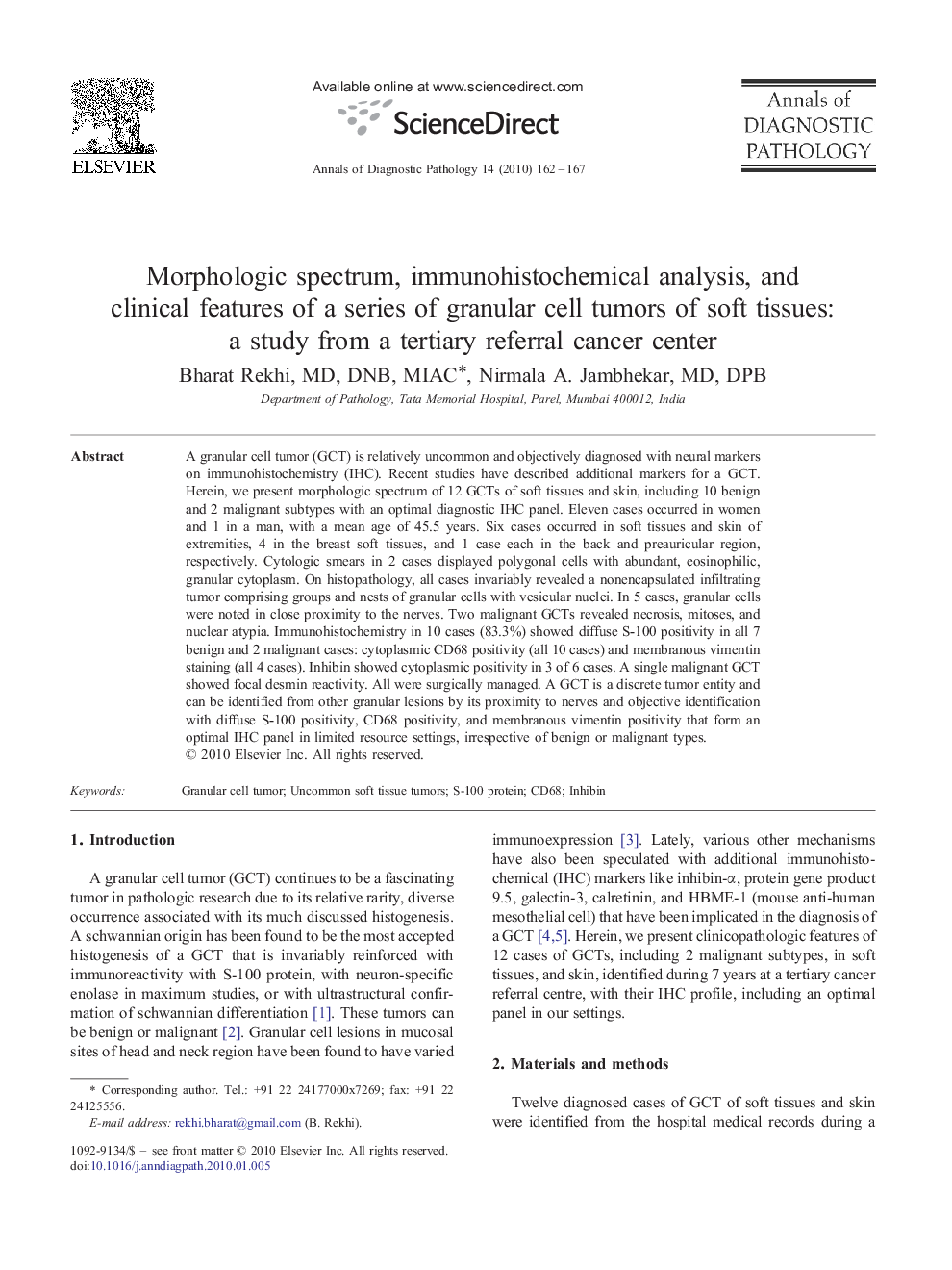| Article ID | Journal | Published Year | Pages | File Type |
|---|---|---|---|---|
| 4130037 | Annals of Diagnostic Pathology | 2010 | 6 Pages |
A granular cell tumor (GCT) is relatively uncommon and objectively diagnosed with neural markers on immunohistochemistry (IHC). Recent studies have described additional markers for a GCT. Herein, we present morphologic spectrum of 12 GCTs of soft tissues and skin, including 10 benign and 2 malignant subtypes with an optimal diagnostic IHC panel. Eleven cases occurred in women and 1 in a man, with a mean age of 45.5 years. Six cases occurred in soft tissues and skin of extremities, 4 in the breast soft tissues, and 1 case each in the back and preauricular region, respectively. Cytologic smears in 2 cases displayed polygonal cells with abundant, eosinophilic, granular cytoplasm. On histopathology, all cases invariably revealed a nonencapsulated infiltrating tumor comprising groups and nests of granular cells with vesicular nuclei. In 5 cases, granular cells were noted in close proximity to the nerves. Two malignant GCTs revealed necrosis, mitoses, and nuclear atypia. Immunohistochemistry in 10 cases (83.3%) showed diffuse S-100 positivity in all 7 benign and 2 malignant cases: cytoplasmic CD68 positivity (all 10 cases) and membranous vimentin staining (all 4 cases). Inhibin showed cytoplasmic positivity in 3 of 6 cases. A single malignant GCT showed focal desmin reactivity. All were surgically managed. A GCT is a discrete tumor entity and can be identified from other granular lesions by its proximity to nerves and objective identification with diffuse S-100 positivity, CD68 positivity, and membranous vimentin positivity that form an optimal IHC panel in limited resource settings, irrespective of benign or malignant types.
